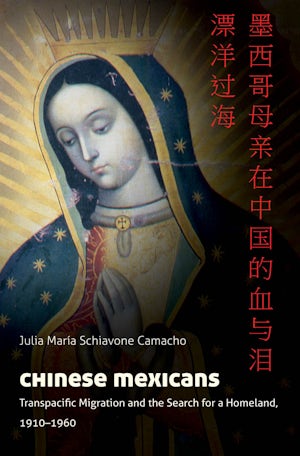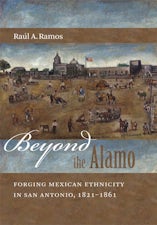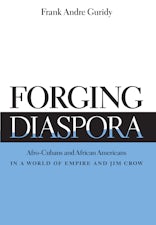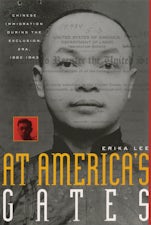Chinese Mexicans
Transpacific Migration and the Search for a Homeland, 1910-1960
By Julia María Schiavone Camacho
248 pp., 6.125 x 9.25, 11 halftones, 2 maps, 4 tables
-
Paperback ISBN: 978-1-4696-6410-1
Published: October 2020 -
Hardcover ISBN: 978-0-8078-3540-1
Published: May 2012 -
E-book EPUB ISBN: 978-0-8078-8259-7
Published: May 2012 -
E-book PDF ISBN: 979-8-8908-4049-3
Published: May 2012
Buy this Book
- Paperback $29.95
- Hardcover $49.95
- E-Book $19.99
For Professors:
Free E-Exam Copies
Tracing transnational geography, Schiavone Camacho explores how these men and women developed a strong sense of Mexican national identity while living abroad--in the United States, briefly, and then in southeast Asia where they created a hybrid community and taught their children about the Mexican homeland. Schiavone Camacho also addresses how Mexican women challenged their legal status after being stripped of Mexican citizenship because they married Chinese men. After repatriation in the 1930s-1960s, Chinese Mexican men and women, who had left Mexico with strong regional identities, now claimed national cultural belonging and Mexican identity in ways they had not before.
Published in association with the William P. Clements Center for Southwest Studies at Southern Methodist University in Dallas, Texas
About the Author
Julia María Schiavone Camacho is associate professor of history at Goshen College.
For more information about Julia María Schiavone Camacho, visit
the
Author
Page.
Reviews
“Camacho’s use of twenty-seven oral interviews (which she conducted) yields insight into aspects of Chinese Mexican experiences previously unexplored by scholars. She captures nuances that are missing from the written record.”--American Historical Review
“Chinese Mexicans demonstrates the racial, gender, sexual, and social mores that were forged in diaspora and forced Chinese Mexican expulsions.”--American Quarterly
“A pioneering and innovative study. . . . Utiliz[es] rare materials to illuminate new questions.”--Western Historical Quarterly
“An accessible book. It can be used well with undergraduate courses and is a good teaching tool for those in the field of oral history.”--Hispanic American Historical Review
"Recommended. All levels/libraries."--Choice
“The lucid prose and clear chronological structure will be appropriate for both general and specialized audiences.”--H-Boarderlands




